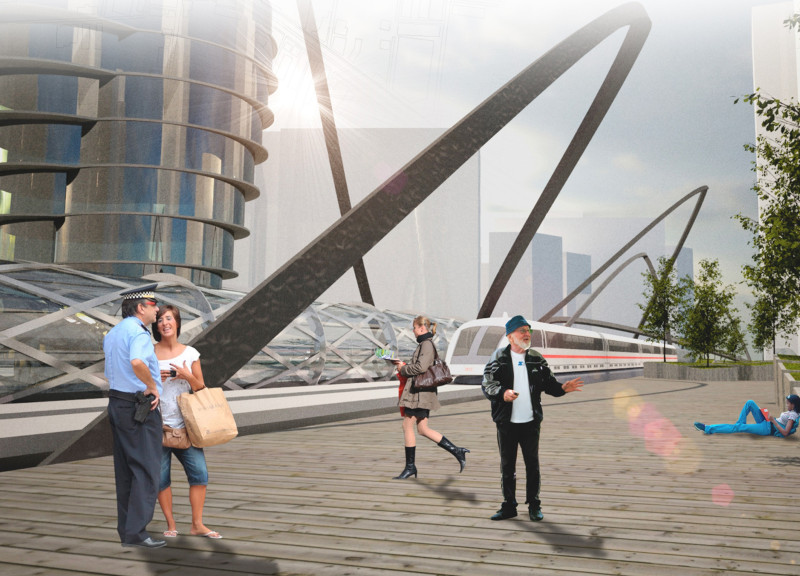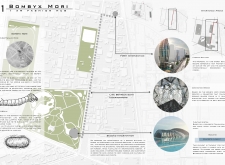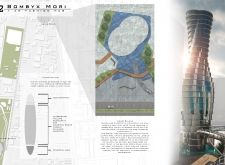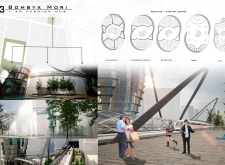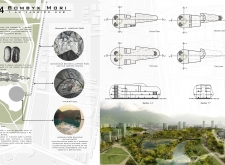5 key facts about this project
The overall function of the Bombyx Mori project is to create a vibrant nexus for education and exhibition in the realms of fashion and design. It comprises two main edifices: a Fashion Center and a Lumphini Park building. Each building plays a distinct role in the overall mission of the project. The Fashion Center, a 25-story tower, is intended to become a go-to resource for aspiring fashion designers and enthusiasts. It houses classrooms, exhibition spaces, and administrative areas, facilitating various activities ranging from educational workshops to large-scale fashion shows.
The Lumphini Park building, conversely, offers a space dedicated to the history and future of fashion with a focus on educational outreach. Designed to float gracefully on water, it serves as a museum where visitors can engage with both the art of fashion and the storytelling behind it. This unique placement not only enhances the aesthetics of the project but also integrates harmoniously with the adjacent nature, encouraging visitors to appreciate the interplay between urban life and natural beauty.
A notable feature of the design is the pedestrian bridge that connects these two structures, providing a seamless transition between the dynamic environment of the Fashion Center and the serene landscape of Lumphini Park. The bridge's organic forms draw inspiration from the lifecycle of the Bombyx Mori moth, symbolizing transformation and growth. This thematic connection to the project’s namesake adds layers of meaning, reinforcing the idea of creativity and renewal.
The materials selected for the Bombyx Mori project reflect a mindful approach to sustainability and aesthetic coherence. Concrete serves as the primary structural element for the floating foundation of the Lumphini Park building and is utilized in various ways throughout the project for its durability and versatility. Glass features prominently in the facade of the Fashion Center, allowing natural light to penetrate the interior spaces, which fosters an inviting and open atmosphere. The thoughtful inclusion of wood in certain areas, particularly on the bridge and outdoor features, adds warmth and a tactile quality that connects the architecture to the human experience.
Unique design approaches in the project are evident in its integration with the surrounding environment and its responses to cultural context. The architectural design emphasizes fluid connectivity—the relationship between the built environment and the landscape is meticulously crafted to encourage interaction and engagement. Visitors can navigate easily between the facilities, enjoying the rich context of Bangkok's vibrant culture and lush greenery simultaneously.
The architectural plans and sections of the Bombyx Mori project reflect a careful consideration of space utilization, ensuring that flexibility accommodates a wide range of activities. Thoughtful circulation patterns promote accessibility and ease of use, while the overall architectural designs prioritize the user's experience. The aesthetic, inspired by the metamorphosis of silk production, creates a narrative that invites exploration and curiosity.
Examining the architectural ideas at play within the Bombyx Mori project reveals a thoughtful, holistic approach to designing a space that embodies both historical significance and modern functionality. As this project continues to evolve and take shape, it stands as a model for future architectural endeavors seeking to combine cultural identity with sustainable practices.
For those interested in exploring the intricacies of the Bombyx Mori project further, an examination of the architectural plans, architectural sections, and architectural designs offers valuable insights. These resources will enhance the understanding of its unique aspects and design philosophy, providing a comprehensive overview of how this project is set to redefine the architectural landscape of Bangkok.


